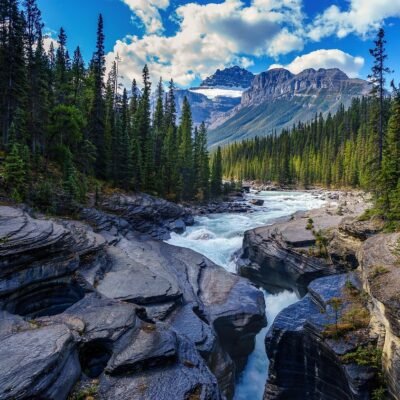The Pacific Crest Trail spans 2,650 miles (4,265 kilometers) from Mexico to Canada through California, Oregon, and Washington. It is a National Scenic Trail. It reveals the beauty of the desert, unfolds the glaciated expanses of the Sierra Nevada, travels deep forests, and provides commanding vistas of volcanic peaks in the Cascade Range. The trail symbolizes everything there is to love—and protect—in the Western United States.
The trail crosses more than 100 major mountain passes, and has more tread in Wilderness than any other trail. A remarkable 45% of the PCT is in designated Wilderness.
It became a National Trail in 1968 and was officially completed (but not entirely finished) in 1993. The Pacific Crest Trail Association’s mission since 1977, is to advocate for the Pacific Crest Trail as an inspirational outdoor experience, to connect people to the PCT, and to conserve the trail.
The Pacific Crest Trail and the Appalachian Trail were the nation’s first National Scenic Trails. America’s National Trails System is more than 88,600 miles long and consists of 11 National Scenic Trails, 19 National Historic Trails, 1,300 National Recreation Trails, and 7 side and connecting trails, 70 wildlife refuges, 80 National Parks, 90 Bureau of Land Management areas, 90 National Forests, 123 Wilderness Areas, and 100 major metropolitan areas. More than 230 million people live within 60 miles of a National Trail.
The PCT is divided up into 29 sections of manageable length. The authors of the Wilderness Press PCT guidebooks split the trail into 18 sections in California (Sections A-R) and then restart the labeling, combining Oregon and Washington (Sections A-L). Therefore, there are two “Section As”. Generally, sections are bounded by significant road crossings and resupply opportunities. This splits the trail into comfortable 40-150 miles sections.
The trail is managed by the U.S. Forest Service, in partnership with the National Park Service, Bureau of Land Management, California State Parks and the Pacific Crest Trail Association.
It is open for pedestrian and equestrian traffic. On overnight trips, travelers camp along the way and carry their own supplies.
For approximately 300 miles, the trail passes through privately owned lands. Although travel on the trail is not restricted, users should respect the rights of the landowners. Through this private land, the trail is on narrow easements that range from 10 to 50 feet in width.
Wilderness permits are required for most of the congressionally designated wilderness lands, national parks and state parks through which the trail passes. Much of the trail doesn’t require permits.
Sometimes sections of the trail close due to fires, damaged bridges or for other reasons. Be sure to check for closures before you head out.
The history of the Pacific Crest Trail is a long, uniquely American story marked by visionary leaders and the work of countless passionate individuals.
